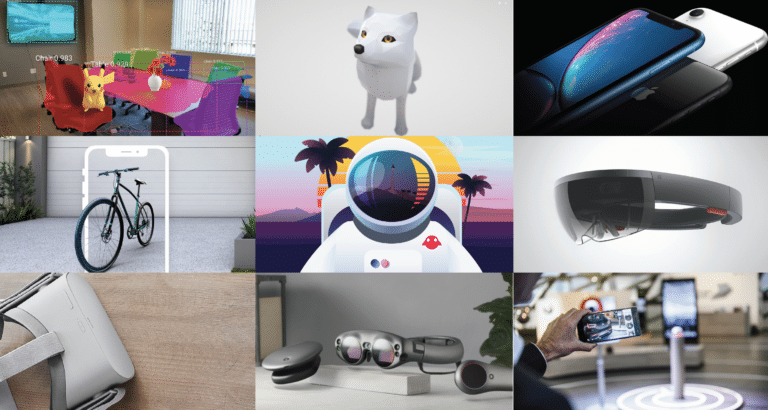
This post is adapted from ARtillry Intelligence’s latest report, XR 2018 Lessons, 2019 Outlook. It includes some of its data and takeaways. More can be previewed here and subscribe for the full report.
2018 was a reflective year for XR. After an exuberant 2016, followed by a corrective 2017, XR industries settled into a moderate pace. This includes reset expectations on the size and timing of AR & VR markets, as well as acceptance that aspirations will take longer to materialize.
But we saw deep-pocketed tech giants charge ahead with XR. With strong contention that XR represents the next computing shift, they’re investing in the future of their platforms by gaining early market share and technological edge. And they’re each attacking XR from different angles.
Apple is investing in AR to fertilize the ground for its future hardware: AR glasses. Google is cultivating visual search, a close cousin of AR, as a search modality. Amazon is embracing AR to boost e-commerce, and Facebook is spending billions to position a VR powerhouse.
Despite XR market softness, it was these moves from tech giants that provided confidence in 2018 for the eventual market arrival. Indeed, there’s no bigger vote of confidence in a technology and a market than billions of dollars in long-term bets. We believe this will continue into 2019.

Mobile AR: Slow & Steady
But what else is happening across the spatial computing spectrum and what do we expect in 2019? Building from our recently-published predictions, we’ll drill down further on just one of them today: mobile AR’s dynamics in 2019. It will be one of the most influential XR subsectors.
Mobile AR’s strength is that it continues to hold the promise of scale, due to about 990 million ARkit and ARCore-compatible (and several more webAR-compatible) smartphones globally. But the more relevant figure is active users, which is much less: 129 million.
The medium needs more time to develop, including underlying technology, developers’ native footing, and user acclimation – all of which go together. Native development is particularly important to build AR apps that are novel, but novelty alone isn’t enough for sustained use.
The combination of novelty and all-day utility will strike the right balance for mainstream appeal, and we haven’t seen that yet – at least for world-immersive AR. Success can also come from “AR as a Feature” (such as Amazon’s AR View), as opposed to standalone apps.

By The Numbers
The dominant AR business model so far is in-app purchases (IAP), including Pokémon Go’s $2 billion in revenue to date. ARtillry Intelligence consumer survey data validate the model, given consumers’ stated unwillingness to pay upfront for a still-unproven product category.
As for a more concrete and quantifyable prediction, we project consumer AR revenue to reach $3.3 billion in 2019, $2.9 billion of which is IAP. The first killer app for world-immersive and SLAM-based AR could be released as early as late 2019, as history generally supports.
This timeframe would be two years after the June 2017 launch of ARkit – the same timeframe after the iPhone 1 when killer apps emerged (Uber, Waze, Foursquare, etc). This is usually the time needed in emerging tech/media formats for developers to gain their native footing.
Killer app(s) will likely be communications, social or a utility AR experience, all of which have the greatest potential stickiness and frequency of use. Utilities in particular are mundane but could prove most useful and scalable, such as visual search. We’re bullish on Gooogle Lens.
Speaking of which, we have a more in-depth review and strategic analysis of Google Lens publishing tomorrow. After playing with it and examining its position, there’s a lot to say about its place in advancing AR. Visual Search is a sort of cousin of AR, but will be a key accelerant.
For deeper XR data and intelligence, join ARtillry PRO and subscribe to the free AR Insider Weekly newsletter.
Disclosure: AR Insider has no financial stake in the companies mentioned in this post, nor received payment for its production. Disclosure and ethics policy can be seen here.
